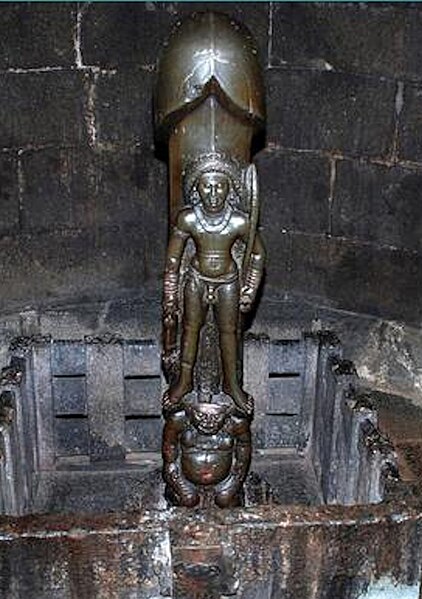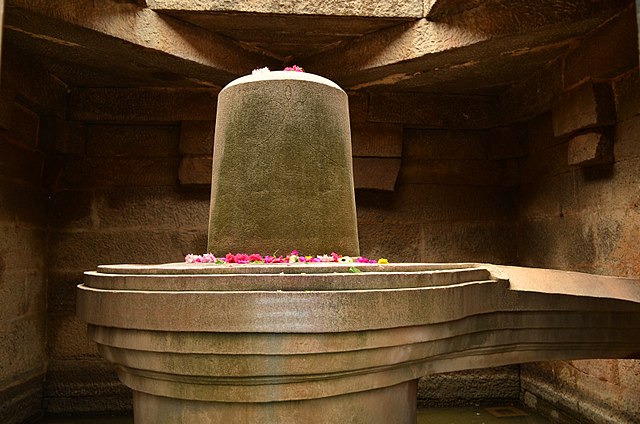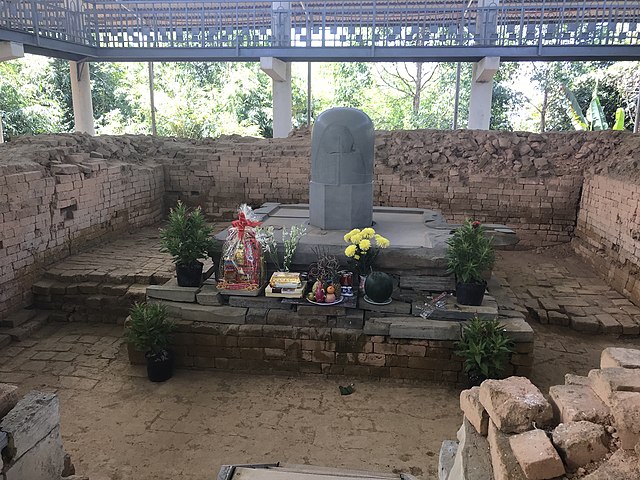The Gudimallam Lingam is an ancient linga in the Parasurameswara Swamy Temple of Gudimallam, a small village near Tirupati city in the Yerpedu mandal of the Tirupati district of Andhra Pradesh, India. It is situated about 13 kilometers south-east of Tirupati city.
The Gudimallam Lingam in-situ
Gudimallam lingam (as it appeared before the floor was lowered): front, rear & side elevations, with sectional plan.
Gudimallam statue details
Views from different angles of a replica of relatively recent date
A lingam, sometimes referred to as linga or Shiva linga, is an abstract or aniconic representation of the Hindu god Shiva in Shaivism. It is typically the primary murti or devotional image in Hindu temples dedicated to Shiva, also found in smaller shrines, or as self-manifested natural objects. It is often represented within a disc-shaped platform, the yoni – its feminine counterpart, consisting of a flat element, horizontal compared to the vertical lingam, and designed to allow liquid offerings to drain away for collection. Together, they symbolize the merging of microcosmos and macrocosmos, the divine eternal process of creation and regeneration, and the union of the feminine and the masculine that recreates all of existence.
A lingam with tripundra, projected on a yoni base
Badavlinga, Hampi (Vijayanagara Empire)
Stone lingam and yoni pedestal found in Cát Tiên, Vietnam, circa 8th century. At 2.1 meter tall, this is the largest lingam ever found in Southeast Asia
A Buddhist stupa (above) may have influenced the later iconography of the Hindu Shiva-linga, according to Swami Vivekananda.








